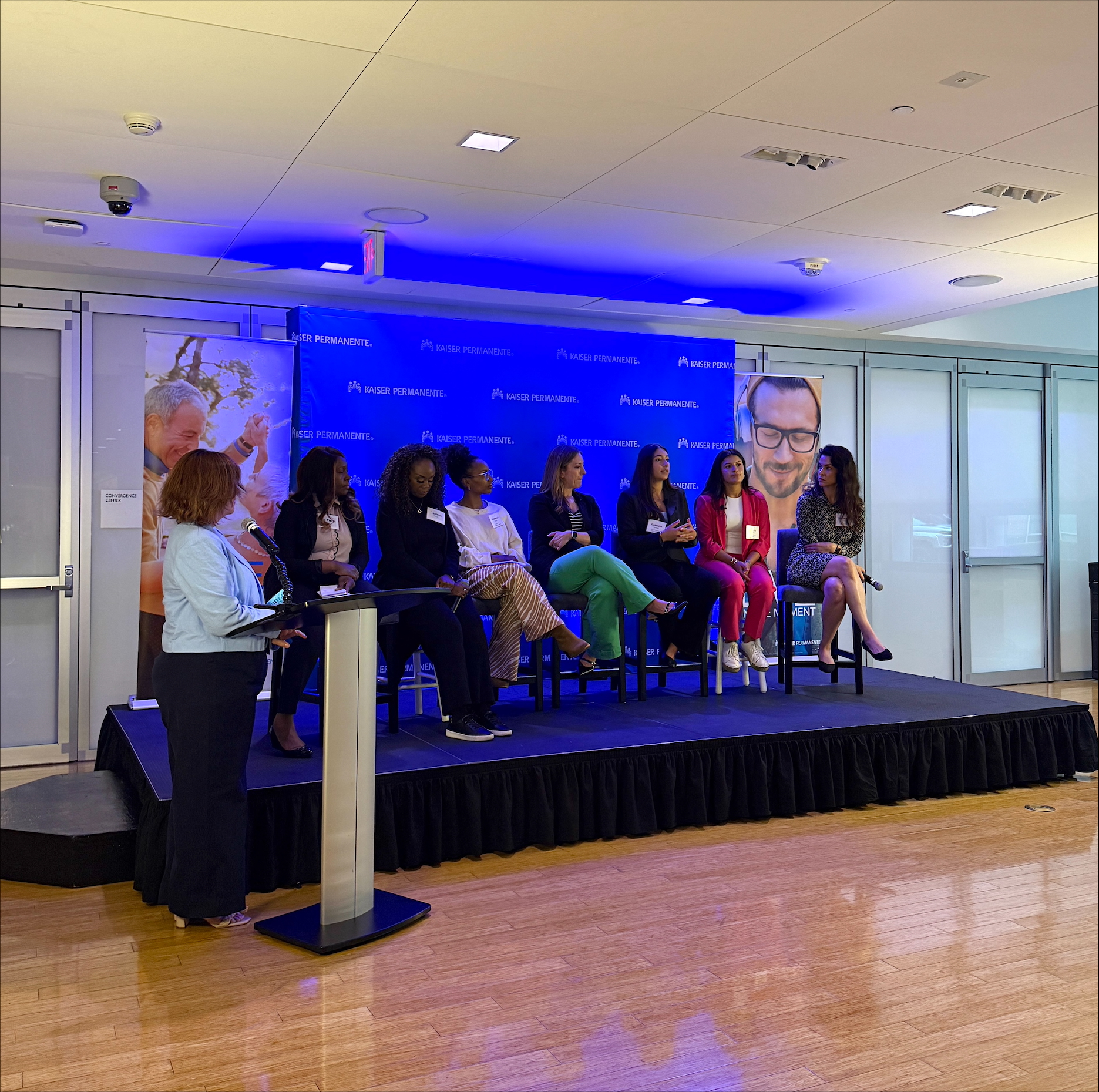The COVID-19 pandemic and resulting economic downturn have dramatically impacted the social health of people across the country, affecting people’s access to healthy food, housing, and transportation. The rise in hunger and food insecurity has been especially striking.
Before the pandemic, 1 in 9 U.S. households were facing hunger. Yet today, Feeding America, the largest hunger-relief organization in the United States, estimates that 1 in 6 adults and 1 in 4 children are food insecure, with the potential for these rates to double as the pandemic continues. Children, communities of color, and single-parent households have been disproportionately affected. Food insecurity impacts a person’s health, education outcomes, and health care costs; addressing it is critical to furthering both health and equity.
Kaiser Permanente’s Food for Life initiative addresses food insecurity nationwide to help people access and afford healthy food. It includes efforts to increase purchasing power through enrollment in federal nutrition programs, provide enhanced nutrition to vulnerable and sick individuals, provide greater access to community resources, and advance local and national food security efforts. It is part of a broader program to address the social health of our members and improve conditions for health and equity within our communities.
Academic and behavioral impacts of food insecurity
Research from the Centers for Disease Control and Prevention demonstrates that “hunger due to insufficient food intake is associated with lower grades, higher rates of absenteeism, repeating a grade, and an inability to focus among students.” Students experiencing food insecurity are more likely to:
- Skip breakfast, which is associated with decreased cognitive performance, attention, memory, visual processing, and problem-solving
- Have deficits in specific nutrients, which is associated with lower grades and higher rates of absenteeism and tardiness
- Experience malnutrition, which impacts physical growth, decreases resistance to disease, and limits children’s brain size and functioning
- Experience anxiety and depression
- Feel ashamed and isolated by the stigma associated with their lack of food
Signs of food insecurity in children
Food insecurity can be difficult to identify in children, and studies show at least 4 students in a classroom of 30 are experiencing chronic hunger. Here are signs to look for that may indicate a need:
- They ask about food every day, and they’re not picky about what they eat.
- They suddenly lose or gain weight without changing their activity level.
- They hoard snacks and food.
- They bully others or misbehave.
- They have a poor attention span or memory, or have trouble concentrating.
- They are hyperactive or impulsive.
- They show aggressive or antisocial behavior.
How school communities can help
Schools are often seen as a hub of trusted connection within the community, and as food insecurity grows, they are increasingly becoming a hub for resources to address hunger. That’s because schools are a consistent touchpoint for many families, providing reliable information to the students who attend them and the staff and teachers who form the school community. Leveraging schools to improve access to food is a critical way to improve the health and well-being of children and people who support them.
In response to COVID-19, Kaiser Permanente Thriving Schools created Continuing Learning: Playbook for Healthy School Communities. The playbook includes resources to support a wide range of needs for students, families, and school staff. Below you will find a variety of food security resources, many that are drawn from the playbook, that school staff and school-serving organizations can use to help their communities.
Identify the unique needs of your community to help people access the right food and nutrition resources. Widely distribute food access information to help families connect to resources like:
- Feeding America: Find Your Local Food Bank
- USDA: National Hunger Hotline
- USDA: Find Meals for Kids When Schools Are Closed
- Why Hunger: Local Food Resources
One of the most effective ways to help families and children is through federal nutrition programs. Schools can support education about and applications for eligible families to receive:
- Supplemental Nutrition Assistance Program (SNAP)
- Special Supplemental Nutrition Program for Women, Infants, and Children, or WIC*
- Pandemic EBT*
Leverage all available programs to increase access to food at your school sites:
- Coordinate applications for free or reduced-price school meals*
- Summer nutrition programs*
- After-school nutrition programs*
*These government programs are available to all qualifying children, regardless of immigration status.




